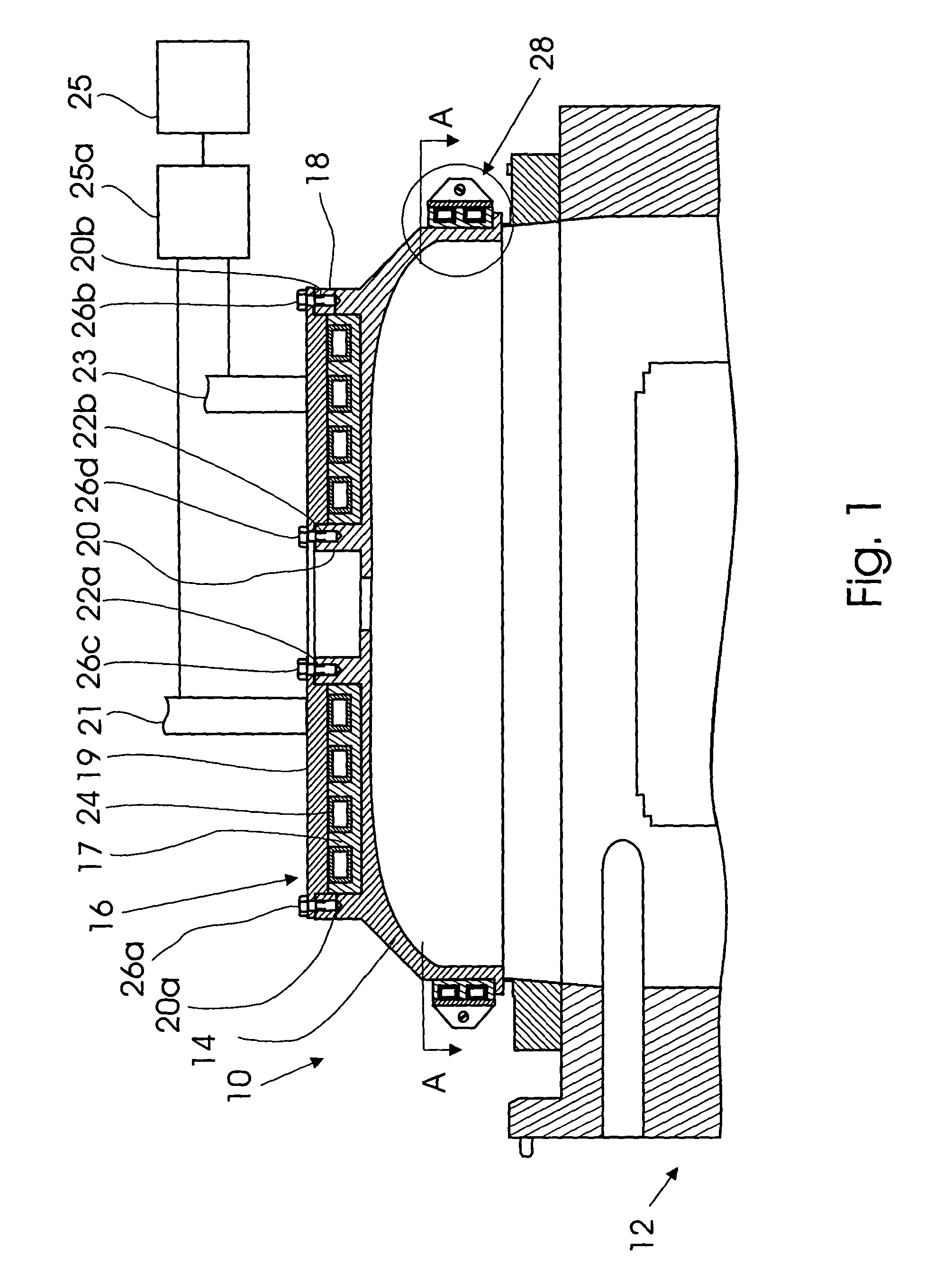Heat-transfer interface device between a source of heat and a heat-receiving object
a heat-transfer interface and heat-receiving object technology, applied in the direction of lighting and heating apparatus, natural mineral layered products, cellulosic plastic layered products, etc., can solve the problems of warping, deformation of the entire interface device, and impair the interface conditions, so as to improve the stability of the heat-transfer interface, improve the heat-transfer conditions, and ensure the effect of heat-transfer stability
- Summary
- Abstract
- Description
- Claims
- Application Information
AI Technical Summary
Benefits of technology
Problems solved by technology
Method used
Image
Examples
Embodiment Construction
[0023]FIG. 1 is a vertical sectional view of an ICP reactor equipped with the coil assembly of the invention. It is understood that the ICP reactor is shown only as one of possible applications of the heat-transfer interface device of the invention. In this drawing, the ICP reactor, which as a whole is designated by reference numeral 10, consists of a sealed ICP reactor housing 12 made from a dielectric material, e.g., a ceramic, and connected to a vacuum system and to a working gas supply system (not shown in FIG. 1). The upper open side of the housing 12 is sealingly closed with a dome-like ceramic cover 14 which in general has the same shape and construction as a conventional reactor housing cover, with the exception that the external top surface of the cover 14 has a specific shape for accommodation of a heat-transfer interface device 16 of the invention. More specifically, the cover has an outer vertical cylindrical project 18 and an inner vertical cylindrical projection 20 whi...
PUM
| Property | Measurement | Unit |
|---|---|---|
| temperature | aaaaa | aaaaa |
| temperatures | aaaaa | aaaaa |
| frequency | aaaaa | aaaaa |
Abstract
Description
Claims
Application Information
 Login to View More
Login to View More - R&D
- Intellectual Property
- Life Sciences
- Materials
- Tech Scout
- Unparalleled Data Quality
- Higher Quality Content
- 60% Fewer Hallucinations
Browse by: Latest US Patents, China's latest patents, Technical Efficacy Thesaurus, Application Domain, Technology Topic, Popular Technical Reports.
© 2025 PatSnap. All rights reserved.Legal|Privacy policy|Modern Slavery Act Transparency Statement|Sitemap|About US| Contact US: help@patsnap.com



